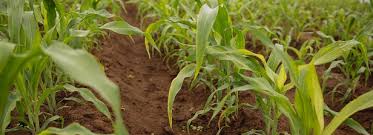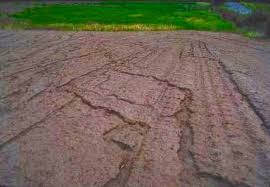Do you know that opinion is still widely divided among pedologists and soil scientists as to which of the traditional systems of soil classification is best to use? As a result of this, most of the soil classification systems in use today attempt to combine features of these approaches.
Hence, soils are common arranged in a hierarchical order or in an upward and integrative assemblage such as soil type, soil series and soil order.
Therefore, in this article, we will consider how two organizations have evolved some soil classification systems that are accepted to a large extent. These are the United States Department of Agriculture (USDA) and the Food and Agriculture (FOA).
Integrative Classification of Soils
As indicated earlier, integrative soil classification systems emerged as a result of differences of opinion in the way traditional systems of soil classifications were done. Integrative classification of soils simply implies bringing together some methods which will make classification holistic other than segmental. In integrative systems of soil classification, soils type or soil series to soil order.
Read Also : The Science of Pedology and Functions of Soil
There are many available systems under the integrative classification systems of soil. Examples are the Seventh Approximation Soil Classification USDA, the Australian Systems of Soil Classification Systems in Europe and the UNESCO/FAO System of Soil Classification.
In this article, we will consider two integrative classification systems that are commonly used. These are the USDA and the FAO classification systems.
1. Seventh Approximation Soil Classification
This soil classification system was developed by USDA in 1974. This system is based on the morphological characteristics of the soil profile and especially on the recognition of certain diagnostic horizons which reflect the dominant soil-forming processes and environments.
It is a system that adopts, to some extent, the principles of zonal, intrazonal and azonal grouping of soils. The names used in this classification have classical language roots in botany and zoology, utilizing Latin or Greek roots words as the bases for the names.
Advantages of the Seventh Approximation Soil Classification
The major advantages of the USDA’s classification are that it
Permits classification of soils rather than soil forming processes.
Focuses on the soil rather than related sciences such as climatology.
Permits the classification of soils of unknown genesis since it is only the knowledge for their properties that is needed.
Permits greater uniformity of classification as applied by a large number of soil researchers.
2. Twelve Soil Orders
In the Seventh Approximation Soil Classification, there are six categories of classification. They include order, suborder, Great group, Sub-group, Family and Series. While Order is the broadest group, series is the most specific category.
In this study, we will concern ourselves with the order category. The order category is based largely on morphology and a given Order includes soils whose properties suggest that they are not too dissimilar in their genesis.

For example, soils developed under grassland vegetation have the same general sequence of horizons and are characterized by a thick, dark, surface horizon that is high in bases and are grouped as Mollisol Order.
There are twelve Soil Orders in the Seventh Approximation Soil Classification of USDA. They are now listed indicating their characteristics as well.
Gelisols: There are soils with permafrost within 2 metres of the surface.
Histosols: These are soils with a surface organic layer of at least 30 – 45cm thick.
Spodosols: They are acid forest soils with a subsurface accumulation of iron and aluminum oxide.
Andisols:They are soils formed in volcanic ash.
Oxisols:These are soils that are intensely weathered and are mostly found in tropical and subtropical environments.
Vertisols:They are dark clayey soils that have high capacity to shrink and swell.
Aridisols: They are soils of arid environments with subsurface horizon development.
Ultisols: These are strongly leached soils with a subsurface zone of clay accumulation and less than 35% base saturation.
Mollisols:These are soils with dark brown to black surface horizons possessing high base status.
Alfisols: These are moderately leached soils with a subsurface zone of silicate clay accumulation and more than 35% base saturation.
Inceptisols: These are young soils with profile features that are weakly developed in subsurface horizons.
Entisols:They are soils with little or no profile or morphological development.
3. The FAO Soil Classification
The FAO developed what can be called a supra-national soil classification i.e. World Soil Classification. This classification conveys useful generalizations about the genesis of soils in relation to the interactive effects of the main soil-forming factors.
It was first published in form of the UNESCO Soil Map of the World in 1974 at a scale of 1 to 5 million. It makes class separations on the basis of diagnostic horizons.
The major criteria used include soil phases, textural classes and slope classes to arrive at 106 soil Units which are mapped as Soil Association. Soil Units have been grouped on the basis of generally accepted principles of soil formation to arrive at 26 World Classes.
The FAO soil map is far from being ideal but it is the only truly international system, incorporating Soil Units used all over the world and most soils can be accommodated on the basis of their field descriptions.
Therefore, you should be aware that the FAO soil classification is intended for classifying soils at a continental scale rather than at a local scale.
The FAO Soil Classes
As stated earlier, the FAO soil Classification grouped world soils into 26 classes. These are Cresols; and Soils; Arenosols; Cambisols; Chernozems; Ferrasols; Fluvisols; Gleysols; Greyzems; Histosols; Kastanozems; Lithosols; Luvisols; Nitosols; Phaeozems; Planosols; Podzols; Podzoluvisols; Rankers; Regosols; Rendzinas; Solonchaks; Solonetz; Vertisols; Xerosols and Yermosols.
In conclusion, we have briefly considered how institutional classification of soils have been done by various organizations the world over including the FAO which is an agency of the United Nations Organization (UNO).
Read Also : Traditional Soil Classification Systems
These classification systems are referred to as integrative as a result of upward and hierarchical assemblage. In this study, the USDA’s Seventh Approximation Soil Classification that of FAO have been considered. While it can be said that the Seventh Approximation classification has twelve soil orders, the FAO classification has 26 classes.
Our concern in this unit is the consideration of integrative soil classification systems. Two of these systems are considered. They are those of United States Department of Agriculture and the Food and Agriculture Organization.
The USDA’s Seventh Approximation Classification system is based on morphology and possess some advantages such as permitting classification of soils rather than soil forming processes and greater uniformity of classification by many soil scientists.
I am sure you remember that this classification system has six categories with the Order being the broadest one while the Series is the most specific category. You need to recollect too that there are 12 soil Orders.
The FAO Soil Classification is known to be a supra-national soil classification. You must not forget that it was first published in 1974 as the UNESCO Soil Map of the World and at a scale of 1 to 5 million. Could you list the major criteria used? Well, let me assist you here for now.
They are soil phases, textural classes and slope classes. There are 106 soil Units mapped as Associations. From these 106 soil units, 26 World Soil Classes are derived. Note that the FAO soil classification is far from being ideal but it is the only truly international system.

